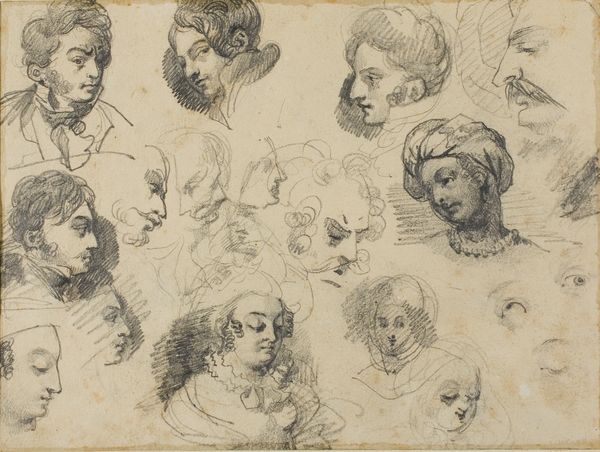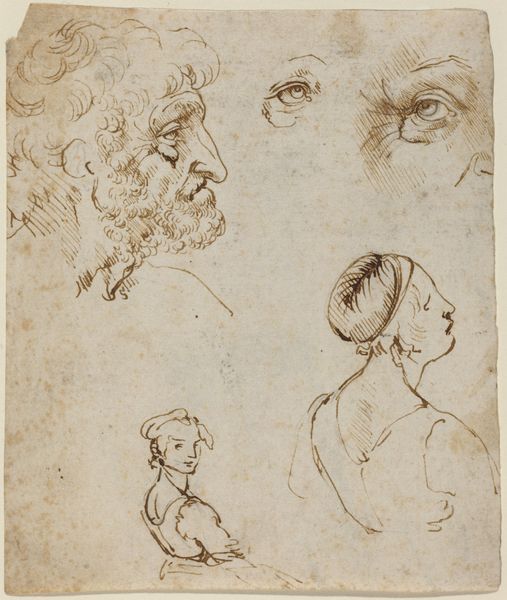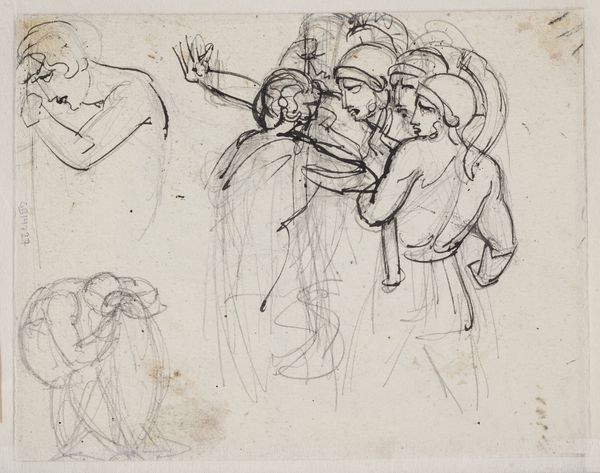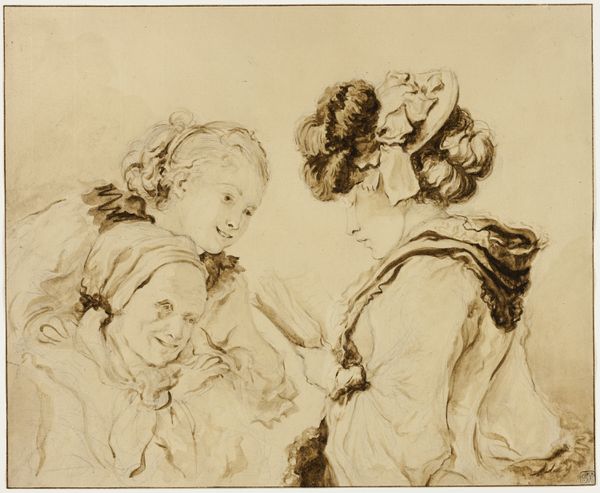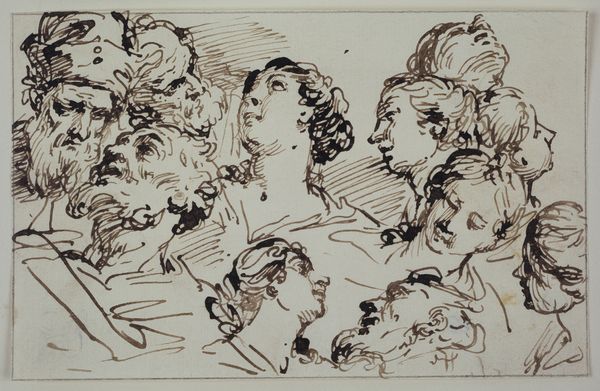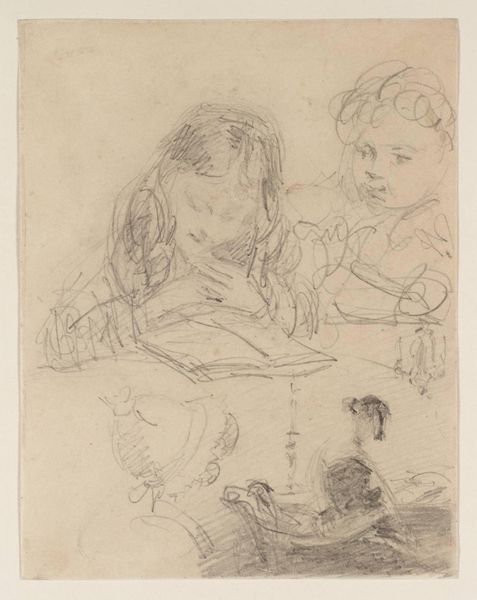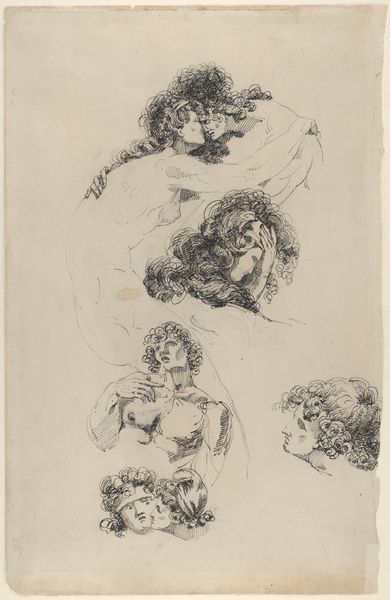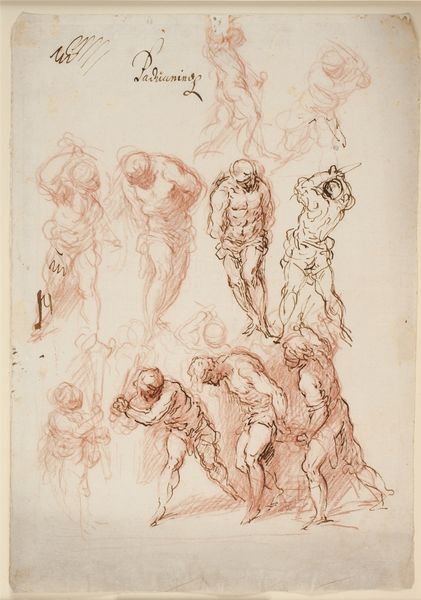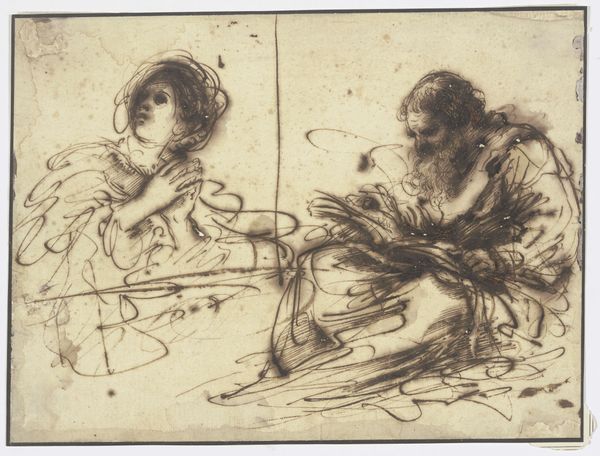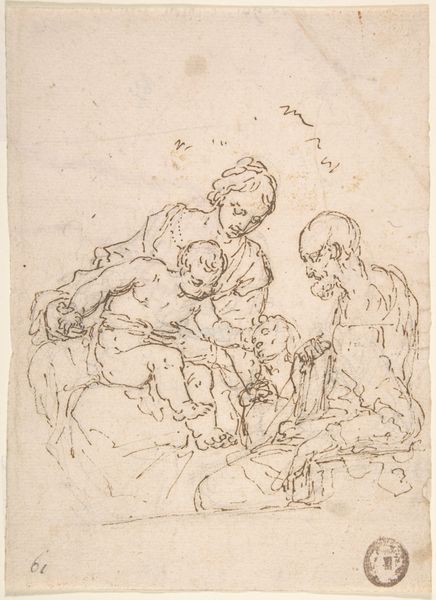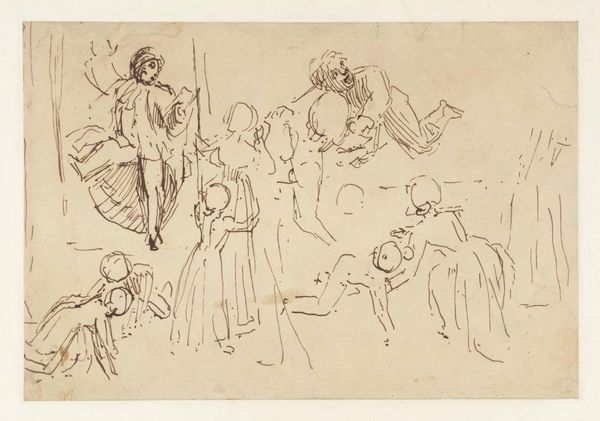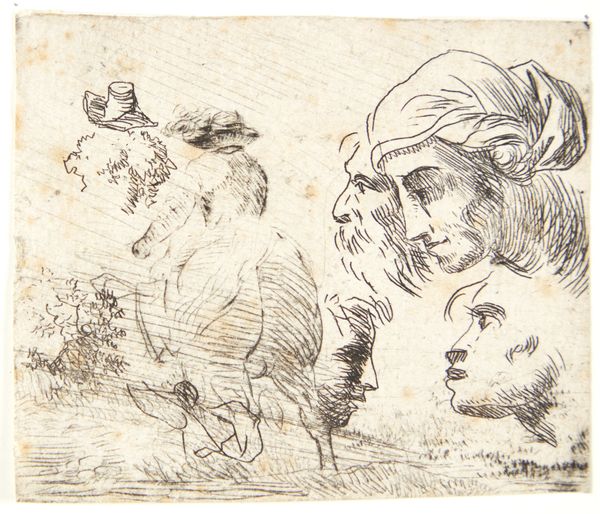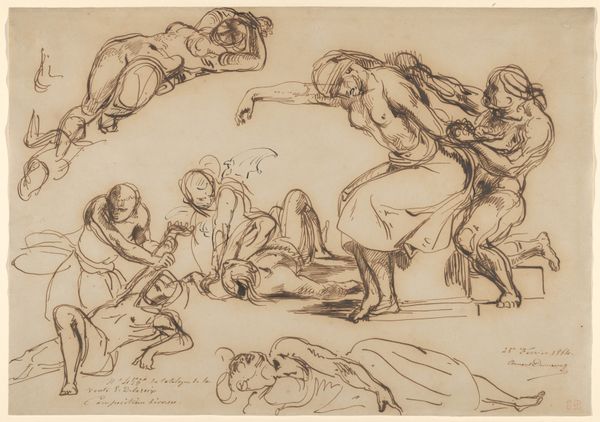
drawing, ink
#
portrait
#
drawing
#
neoclacissism
#
figuration
#
ink
#
academic-art
Dimensions: 136 mm (height) x 125 mm (width) (bladmaal)
Curator: At the SMK, we find “Studier af ansigter” or "Studies of Faces," a drawing in ink by Nicolai Abildgaard, created sometime between 1743 and 1809, exemplary of neoclassicist themes through the artistic conventions of academic art. What's your initial response to this drawing, as you look at it? Editor: It feels intimate, like peering into a sketchbook. There’s a casual quality to it, despite the subjects seemingly inspired by classical sculptures. Are these preparatory sketches for a larger composition? They remind me of actors backstage warming up—testing out different expressions, profiles… Curator: Absolutely. Abildgaard was deeply invested in the neoclassical movement and these faces exemplify a return to classical forms. If we consider the broader historical context of the late 18th century, his interest resonates with wider societal fascinations surrounding notions of reason, civic virtue, and order, aligning well with contemporary philosophical thought on revolution, ethics, and aesthetics. Editor: So, beyond just art practice, his stylistic choices engaged in contemporary politics of ancient aesthetics, and an ancient desire for a structured world? I'm now wondering, do these faces resemble real people, perhaps from his social circle? Curator: Potentially, though primarily the heads reflect idealised features, characteristic of the neoclassicist aesthetic that draws influence from classical sculpture. Abildgaard was very influential, holding a directorship at the Academy and thus heavily influencing the course of Danish art. Through his academic approach and engagement with these timeless forms, his drawings spoke to wider dialogues about social reform through visual ideals. Editor: It’s like these sketches are whispers from the Enlightenment—echoing ideas of progress, beauty and universal values… Despite being just studies. What is your view on the influence this style has had on Danish national identity? Curator: In art history, Abildgaard played a crucial role. By advocating neoclassicism he not only set a formal precedent for future Danish artists but his influence shaped the nation’s cultural identity, associating Denmark with wider European movements towards political and artistic liberty. He provided Danish culture an anchor and allowed it to express its unique cultural interpretations using neoclassical motifs. Editor: Seeing these sketches really allows me to ponder on the foundations upon which new worlds can be imagined, where ideals of beauty and truth serve a common humanity. Thank you! Curator: My pleasure! Let’s move on to our next exhibit.
Comments
No comments
Be the first to comment and join the conversation on the ultimate creative platform.
